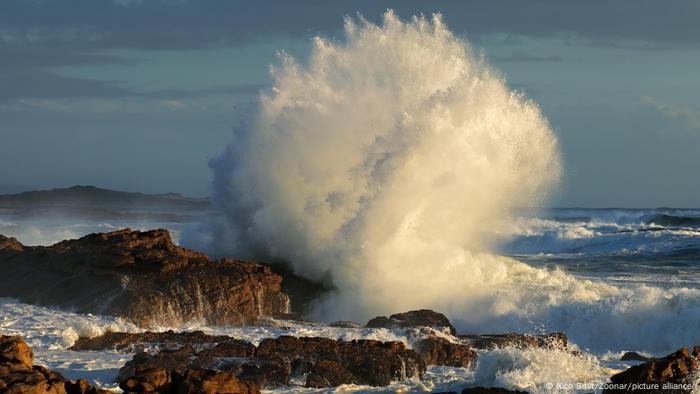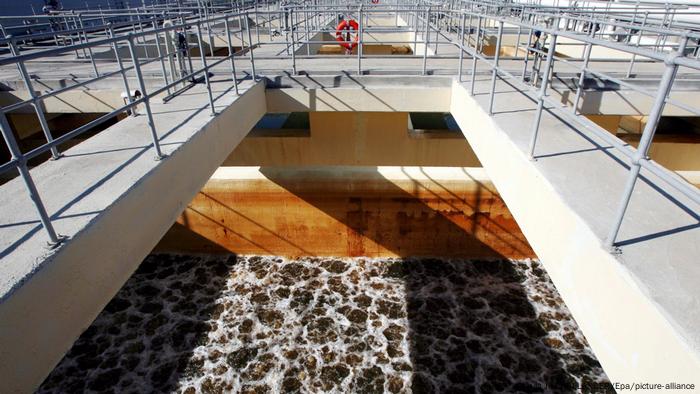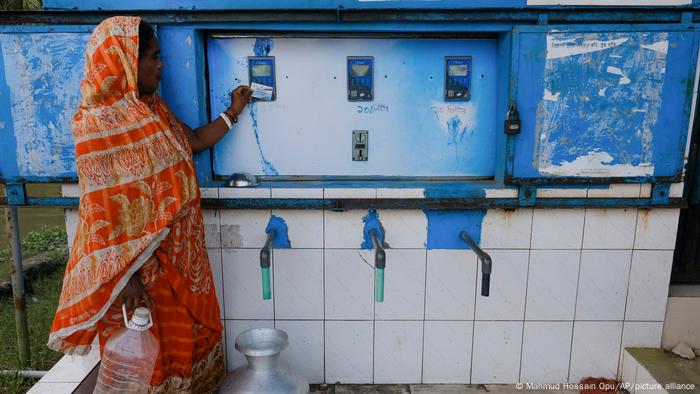More than two billion people do not have access to clean drinking water. Desalination of seawater can help, but it also poses environmental risks. Why the method can still be a solution.

The sea could be the saving grace shore for arid areas
Although 70 percent of the earth's surface is covered with water, only 1 percent of it is potable. In addition, freshwater, a finite resource, is distributed very unevenly. In hot and arid regions of the world, where population is growing along with living standards, there is not enough water for everyone. A situation that is being exacerbated by climate change. Exotic approaches already exist in the fight against drought, such as “iceberg harvesting”, which involves towing icebergs and turning them into drinking water, or creating rain at the touch of a button by injecting chemicals into clouds. But they haven't proven themselves on a large scale yet.
The desalination of seawater has therefore become one of the few real and implementable ways in which regions suffering from water shortages can arm themselves against the drought. The idea itself is centuries old. Today, on the one hand, there is the approach of thermal desalination and reverse osmosis. In the former, the water is evaporated and distilled, in the latter, salt and water are separated from each other by a membrane. There are currently over 20,000 desalination plants in operation in more than 170 countries worldwide – the ten largest are in Saudi Arabia, the United States, Israel and the United Arab Emirates (UAE).

A desalination plant in Tel Aviv, Israel, a country increasingly dependent on desalinated water
New water sources are essential
Nearly half of freshwater from seawater desalination comes from the Middle East and North Africa, according to Manzoor Qadir, vice chair of the United Nations University for Water, Environment and Health. These arid areas have few other sources of water and rely on seawater desalination. According to Qadir, they have less than 500 cubic meters per capita available annually through rain or other runoff. That's about three times less than in the US.
Water poverty will continue to worsen with population growth and rising temperatures, with sub-Saharan Africa likely to become “a water scarcity hotspot” by 2050, according to Qadir. Desalinating seawater is a good opportunity to use existing resources, also because the costs “have fallen drastically,” says Qadir – from around five dollars per cubic meter in 2000 to the current average of 50 cents. “You don't have to think long about it,” says Frithjof C. Kuepper from the Department of Biodiversity at the University of Aberdeen and an expert on the subject of “environmental influences from desalination plants” in Cyprus. “For countries like Cyprus, if they want to maintain their standard of living, there is no other option.”
In the Republic of Cyprus, the warmest and driest country in the EU, 80 percent of drinking water comes from the desalination of seawater, according to Kuepper. As early as the 1990s, fluctuating rainfall led to water shortages. At that time, the Cypriot government initially tried to balance the deficit by importing water from Greece. “But that cost ten times more than desalinating the water,” Kuepper continues. That's why the government began to build desalination plants in the early 2000s. Water shortages were to be avoided in this wayBoth Kuepper and Qadir acknowledge that the supposed silver bullet against water scarcity in its current form poses serious environmental problems. One reason is that the process consumes a lot of energy. In Cyprus alone, desalination plants are responsible for around two percent of total greenhouse gas emissions and five percent of electricity consumption. This makes it one of the most electricity-intensive sectors in the country.
Another problem is the toxic brine, a highly concentrated salty seawater residue that is produced during the process. The mixture has a significantly higher salt content than seawater, but is often fed back into the sea. There it can cause significant damage to coastal ecosystems. A report co-authored by Manzoor Qadir shows that high salinity combined with climate-induced temperature rises in the water can lead to lower oxygen levels. This results in what is known as hypoxia, a lack of oxygen. This highly saline water can sink to the sea floor and kill microorganisms in the water that are vital to the entire food chain. Chemical compounds such as copper and chloride are also used in the desalination process, which the report says can be toxic to aquatic organisms.
Seawater Desalination: The Solution to Water Scarcity?
How can desalination become sustainable?
According to the authors of the study, the solution to the high CO2 emissions is to use wind and solar energy to operate desalination plants. The Berlin company Boreal Light, for example, has developed desalination plants that are completely powered by renewable energies and produce independently of the power grid and developments in electricity prices. “The water is free, the electricity is free from wind and sun. This allows us to produce 1000 liters [fresh water] for 50 cents,” said Ali Al-Hakim, co-founder of Boreal Light in an interview with DW. According to Al-Hakim, their supply and prices for a cubic meter of water can compete with the prices of fresh water from rivers or wells.
According to Kuepper, the excreted toxic brine could also be discharged into the sea with special pipes where it causes less damage. However, it is better to leave the waste on land. A 2019 study shows how sodium, magnesium, calcium, potassium, bromine, strontium, lithium, rubidium and uranium could be recovered from the filtered material and reused in industry and agriculture. However, the extraction of these resources is not economically competitive, says Qadir. This needs to change, as reuse is an important sustainable solution, he adds. Especially “in countries that produce large amounts of brine at relatively low efficiencies, such as Saudi Arabia, the UAE, Kuwait and Qatar”.

A villager fetches drinking water from a water desalination plant in Bonbibi Tala in Satkhira, Bangladesh
Recycling of seawater brine?
Scientists at the Massachusetts Institute of Technology (MIT) have proposed ways to reuse brine by using the salt to make caustic soda or caustic soda The newest and most modern plants in the USA are already producing less brine.
Around 12 percent of the world's desalinated water is produced in the USA, but only 4 percent of the world's brine, explains Qadir. In contrast, half of all desalinated water comes from regions in the Middle East and North Africa. Since some of the systems there are not as efficient and modern, 70 percent of all brine worldwide comes from these regions. According to Qadir, improved technology will reduce the impact on the climate and the environment. For Kuepper, there will be no way around desalination in the future. “It is our job to ensure that it is also sustainable.”
Adapted from English by Tim Schauenberg.

